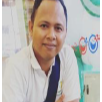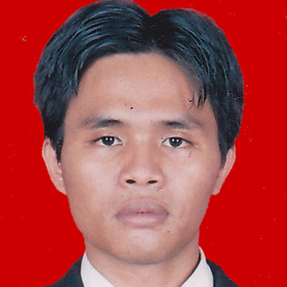International Journal of Modern Education and Computer Science (IJMECS)
IJMECS Vol. 14, No. 1, 8 Feb. 2022
Cover page and Table of Contents: PDF (size: 1291KB)
Development of Blended Learning Content based on Tri Kaya Parisudha-superitem in Kelase Platform
Full Text (PDF, 1291KB), PP.30-43
Views: 0 Downloads: 0
Author(s)
Index Terms
Content, Blended Learning, Tri Kaya Parisudha, Superitem, Kelase.
Abstract
Blended learning can be carried out well if it is supported by good content. Good content consists of the subject, performance assignments, discussion forums, and quiz questions that are packaged in an interesting and structured manner. Good content must also be used to measure students’ abilities in the cognitive, affective, and psychomotor domains. One of the efforts that can be made to realize good blended learning content is to develop content by inserting the Tri Kaya Parisudha and Superitem concepts into the Kelase platform. The Tri Kaya Parisudha concept is used as a basis for measuring students’ abilities in the cognitive, affective, and psychomotor domains. Superitem concept is used as the basis for structured content creation (especially on quiz questions and performance tasks) starting from the lowest to the highest level of complexity. Referring to some of those things, this research aimed to provide an overview of the stages of developing blended learning content that integrated the Tri Kaya Parisudha concept and the Superitem concept in the Kelase platform (a case study of Senior High Schools/Vocational High Schools in Bali). This research used the 4D method, which consists of 4 stages, including Define, Design, Develop, and Disseminate. The subjects involved in content testing were four experts. The tools used to collect data were interview guides, photo documentation, and questionnaires. The technique used to analyze the data was descriptive quantitative. The analysis technique in this research was carried out by making a comparison between the five-scale reference effectiveness standard with the percentage level of effectiveness of the blended learning content. The results showed the level of effectiveness of the blended learning content based on Tri Kaya Parisudha-Superitem in the good category with a percentage was 88.667%.
Cite This Paper
I Putu Wisna Ariawan, Dewa Gede Hendra Divayana, P Wayan Arta Suyasa, "Development of Blended Learning Content based on Tri Kaya Parisudha-superitem in Kelase Platform ", International Journal of Modern Education and Computer Science(IJMECS), Vol.14, No.1, pp. 30-43, 2022. DOI:10.5815/ijmecs.2022.01.03
Reference
[1] P.D. Rosalina, “The Implementation of Hindu Philosophy “Tri Kaya Parisudha” for Sustainable Tourism in Munduk Village, North Bali,” JUMPA, Vol. 3, No. 2, pp. 223–237, 2017.
[2] I.G.P.E.R. Dewi, and I.D.G.D. Suputra, “Philosophy Tri Kaya Parisudha as Moderators the Effect of Equity Sensitivity and Ethical Sensitivity on Auditor’s Ethical Behavior in Financial Audit Board of Republic Indonesia (BPK RI) Representatives of Bali Province,” International Journal of Research Publications, Vol. 10, No. 1, pp. 1–15, 2018.
[3] D.G.H. Divayana, “Development of ANEKA-Weighted Product Evaluation Model Based on Tri Kaya Parisudha in Computer Learning on Vocational School,” Cogent Engineering, Vol. 5, pp. 1–33, 2018.
[4] I.K. Ardhana, “Religious Teachings on Sustainability in the Context of Hinduism in Bali,” Istanbul Journal of Sociological Studies, Vol. 56, No. 2, pp. 21–41, 2017.
[5] A.A.I.P. Kusumawati, and I.W.E. Mahendra, “Health Student Readiness Following Interprofessional Education Based on Tri Kaya Parisudha,” Journal of Advanced Research in Dynamical and Control Systems, Vol. 12, No. 4, pp. 321–329, 2020.
[6] C. Wells, “The Structure of Observed Learning Outcomes (SOLO) Taxonomy Model: Howeffectiveis it?,” Journal of Initial Teacher Inquiry, Vol.1, pp.37–39, 2015.
[7] J. Apawu, N.A Owusu-Ansah, and P. Akayuure, “A Study on the Algebraic Working Processes of Senior High School Students in Ghana,” European Journal of Science and Mathematics Education, Vol.6, No.2, pp.62–68, 2018.
[8] E. Bijsterbosch, T. Béneker, W. Kuiper, and J.V.D. Schee, “Characteristics of Test Items Focusing on Meaningful Learning: A Case Study in Pre-Vocational Geography Education in the Netherlands,” European Journal of Geography, Vol.9, No.1, pp.62–79, 2018.
[9] A.F. Jamil, “Development of Student’s Worksheet to Analyze Student’s Algebraic Thinking Based on SOLO Taxonomy,” Advances in Social Science, Education and Humanities Research, Vol.160, pp.119–122, 2017.
[10] E. Bijsterbosch, J.V.D. Schee, and W. Kuiper, “Meaningful Learning and Summative Assessment in Geography Education: An Analysis in Secondary Education in the Netherlands,” International Research in Geographical and Environmental Education, Vol.26, No. 1, pp.17–35, 2017.
[11] D.G.H. Divayana, “The Implementation of Blended Learning with Kelase Platform in the Learning of Assessment and Evaluation Course,” International Journal of Emerging Technologies in Learning, Vol. 14, No. 17, pp. 114–132, 2019.
[12] I.M. Ardana, I.P.W. Ariawan, and D.G.H. Divayana, “Development of Decision Support System to Selection of the Blended Learning Platforms for Mathematics and ICT Learning at SMK TI Udayana,” International Journal of Advanced Research in Artificial Intelligence, Vol.5, No. 12, pp.15–18, 2016.
[13] N. W. Sukerti, A. Mukhadis, T.M. Kiranawati, H. Suswanto, and D. Nurhadi , “The Effect of Project-Based Learning which Integrates Tri Kaya Parisudha Concept and Emulation Ability on Students’ Comprehension and Formation of An Entrepreneurial Mindset ,” International Journal of Innovation, Creativity and Change, Vol.8, No. 1, pp.324–343, 2019.
[14] E. Sudihartinih, “Facilitating Mathematical Understanding in Three-Dimensional Geometry using the SOLO Taxonomy,” ERUDIO: Journal of Educational Innovation, Vol.6, No. 1, pp.11–18, 2019.
[15] M.K. Maftuh, and D. Hidayat, “The Effect of Superitem Learning Model on Increasing Students Learning Achievements,” Journal of Innovative Mathematics Learning, Vol.1, No. 4, pp.367–373, 2018.
[16] W.H. Wu, H.Y. Kao, S.H. Wu, and C.W. Wei, “Development and Evaluation of Affective Domain Using Student’s Feedback in Entrepreneurial Massive Open Online Courses,” Frontiers in Psychology, Vol.10, pp.1–9, 2019.
[17] H.D. Ikawati, I.A. Majid, and Z. Anwar, “Effectiveness of the Superitem Learning Model on Students Learning Achievements,” International Journal for Educational and Vocational Studies, Vol.1, No.3, pp.184–188, 2019.
[18] A.A. Rahadini, and T.R. Fitriana, “Blended Learning on Listening Learning Based of Local Wisdom in the Javanese Language Education Study Program,” Advances in Social Science, Education and Humanities Research, Vol. 397, pp.426–433, 2019.
[19] B.A. Hibra, L. Hakim, and T. Sudarwanto, “Development of Vlog Learning Media (Video Tutorial) on Student Materials Tax at SMK PGRI 1 Jombang,” International Journal of Educational Research Review, Vol. 4, No. 3, pp. 435–438, 2019.
[20] D.L. Wardani, I.N.S. Degeng, and A. Cholid, “Developing interactive multimedia model 4D for teaching natural science subject,” International Journal of Education and Research, Vol. 7, No. 1, pp. 63–72, 2019.
[21] G.A.D. Sugiharni, “The Development of Interactive Instructional Media Oriented to Creative Problem Solving Model on Function Graphic Subject,” Journal of Educational Research and Evaluation, Vol. 2, No. 4, pp. 183–189, 2018.
[22] S.A. Sari, and Y.S. Rezeki, “The Development of An Ingenious Circuit Based on Chemo-Edutainment Learning,” International Journal of Educational Research Review, Vol. 4, No. 1, pp. 15–25, 2019.
[23] M.R.R. Razak, M. Dahong, J. Ahmad, H. Dema, and A. Mustanir, “The effect of siri’s marriage on government administration,” International Journal of Sciences: Basic and Applied Research (IJSBAR), Vol. 42, No. 3, pp.171–184, 2018.c
[24] N.S.K. Khader, “The Effectiveness of Blended Learning in Improving Students’ Achievement in Third Grade’s Science in Bani Kenana,” Journal of Education and Practice, Vol. 7, No. 35, pp. 109–116, 2016.
[25] D.I. Rahmawati, N. Priatna, and D. Juandi, “Algebraic Thinking Characteristics of Eighth Grade Junior High School Students Based on Superitem Test of SOLO Model,” IOP Conf. Series: Journal of Physics: Conf. Series, Vol. 1157, No. 4, pp. 1–7, March 2019 [International Conference on Mathematics and Science Education (ICMScE 2018), Bandung, Indonesia, p. 5, 2018].
[26] L.H. Lian, and W.T. Yew, “Development of an Assessment Literacy Super-item Test for Assessing Preservice Teachers’ Assessment Literacy,” International Journal of Innovation, Creativity and Change, Vol.13, No.7, pp.870–889, 2020.


